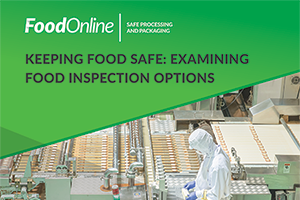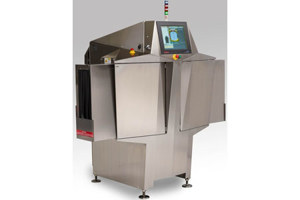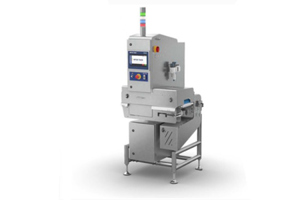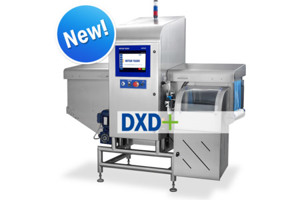What are the benefits of using automated product data management and quality management system software solutions in manufacturing?
- Improving Sustainability With Technology, Digitalization, And IoT
- Reducing Product Degradation With Pneumatic Conveying Systems
- Kraft Heinz Meets Customer Requirements With Kemutec Milling Systems
- Minimizing Pet Food Breakage Through Innovative Conveying System
- Flavor Industry Trends: The Demand For Healthy, Sustainable Alternatives
- Blower Room Ventilation: Improve Efficiency And Longevity
- Three Stage Filtration Train Delivers Shelf-Stable Cold Brew Coffee
FOOD MANUFACTURING GUEST CONTRIBUTORS
-
Implications Of The Upcoming USDA Strengthening Organic Enforcement Rule
The new Strengthening Organic Enforcement (SOE) Rule, which went into effect in March 2023, seeks to reduce fraud in the organic marketplace, improve the USDA’s enforcement protocols, and enhance oversight of organic producers, handlers, and certifiers. Though the rule will require action for many businesses and organizations, these changes will ultimately create a more unified, trusted, and transparent organic supply chain.
-
Addressing A Lack Of Transparency In Green Claims
The rise in consumer awareness and demand for greater transparency has led to changes in regulations worldwide. In response to greenwashing in the food sector, as well as other industries, regulatory authorities are stepping up efforts to hold organizations accountable for their green claims.
-
Smart Irrigation For Agriculture Leads To More Efficient Carbon Capture
Farmers are key to carbon capture, though many plans to reverse greenhouse gas emissions — such as the one described in Lawrence Livermore National Laboratory's 2020 report on California's efforts, Getting to Neutral — largely ignore them.
-
Innovation In Water Remediation: Specialized Electrocoagulation For Water Hardness Removal
Hardness in water can be characterized into its primary constituent mineral components, typically calcium and magnesium. Excess water hardness in a water supply creates many issues for industry, utilities, and life in general.
WHITE PAPERS
-
Principles Of Due Diligence For Food Safety And Quality Control8/23/2023
Explore the core principles of due diligence, legal requirements and standards for food safety, and ways to reduce the risk of product recalls.
Today’s dynamic manufacturing climate presents multiple challenges, forcing manufacturers to compare traditional and modern batch and rethink what to expect when choosing a system.
Product recalls can damage a company's reputation. Learn about the reasoning behind recalls, the impact of recalls, and what companies can do to minimize their exposure to such risks.
Explore how sludge production and energy consumption result in significantly high GHG emissions for aerobic treatment processes.
BioElectrochemical approaches, such as Aquacycl’s BioElectrochemical Treatment Technology (BETT™), can act as industrial pretreatment to make anaerobic digestion significantly more efficient and reliable.
APPLICATION NOTES & CASE STUDIES
-
Earth Animal Keeps Out Foreign Body Contamination3/18/2024
Learn the details behind an X-Ray inspection system enabling a pet food provider to effectively inspect their products to identify and remove any that contain foreign objects.
FOOD ONLINE CONTENT COLLECTIONS

In this free collection of articles, you’ll find articles on four different types of inspection systems and how they work to keep food safe. Further, these articles will explain the creation of food safety and quality programs and how the four types of technology are used to bolster these programs.
More Content CollectionsLATEST FOOD HEADLINES
- Breeding More Resilient Soybeans May Come Down To Test Site Selection
- AGCO Launches PTx, A Precision Ag Portfolio To Accelerate Technology Transformation
- Empowering Excellence: Total Quality Management Training For Superior Crop Breeding Services
- ADAMA Launches New Cereal Fungicide Forapro® For Supercharged Disease Control And Higher Yields
- Corn Reduces Arsenic Toxicity In Soil
WEBINARS
- Metal Detectors And X-Ray Inspection Systems: What You Need To Know
- Raw Material Product Inspection: Are You Missing This Important Stage?
- Overcoming Key Inspection Challenges For Quick-Prep Foods And Meal Kits
- Metal Detection Or X-Ray Inspection: Which Is Right For Your Application?
- Product Inspection Insights For Pet Food Safety And Quality
FOOD INDUSTRY INSIGHTS
-
What are the benefits of using automated product data management and quality management system software solutions in manufacturing?
-
Here, we explore environmental sustainability, economic sustainability, social sustainability, and environmentally friendly solutions that address current challenges in the brewing industry.
-
Without compromising on taste or quality, consumers are seeking "better for you" products that align with healthier lifestyles in today's diverse food and beverage market.
-
Microbial retention is the single most important performance attribute of sterilizing-grade air and gas filters. Explore three methods used by filter manufacturers to validate microbial retention performance.
-
Explore real-life success stories that demonstrate how Pall Corporation is helping food and beverage manufacturers provide the best quality products while reducing costs and supporting green initiatives.



















